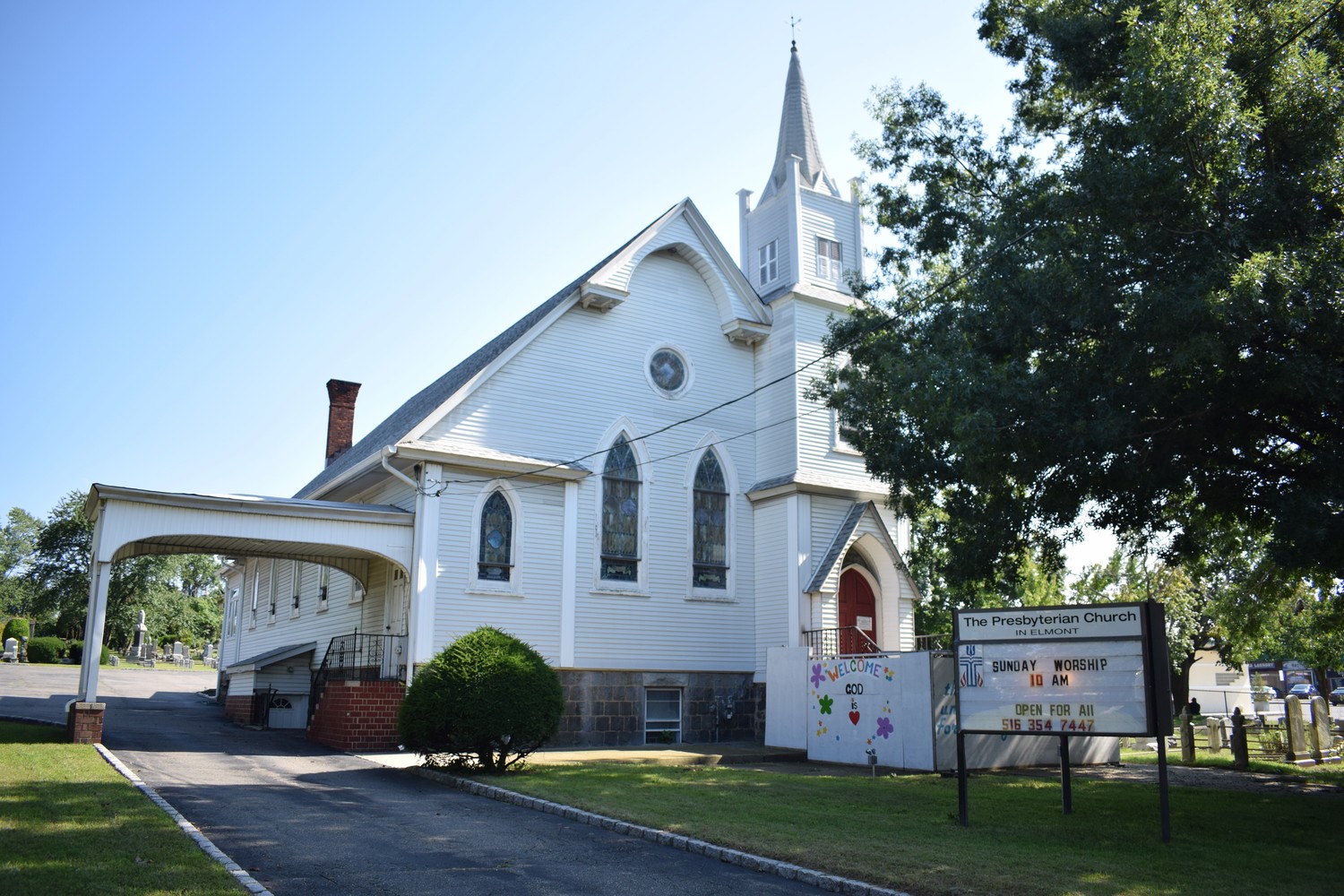Elmont Presbyterian seeks town’s help
Historic 113-year-old church in need of TLC
Since 1905, St. Paul’s Presbyterian Church has stood in Elmont as a symbol of the hamlet’s German past, when it was part of the old Fosters Meadow community. At the church’s grand opening on March 12, 1905, the Hempstead Sentinel and Long Island Farmer newspapers described it as a community hub, a uniting structure that comforted Elmont residents after the older Presbyterian church was lost in a suspicious fire the day before.
Now, more than a century later, time has begun to claim St. Paul’s, as a quick glance at the church on Elmont Road makes clear. Wooden boards block off the front door and stairs as they crumble from rot, and the aging facade and darkening steel glass windows betray its status as a Town of Hempstead historic landmark.
When Elmont’s German population began to move out and dwindle after the 1970s, so too did the church’s congregation. Current Pastor Charles Monts said the church sees about 23 people every Sunday, and with the current state of disrepair plaguing St. Paul’s, Monts said the building is on “its last legs.”
“The jury's out on whether it has a future,” Monts told the Town of Hempstead Landmark Preservation Committee in November when he asked for the town’s help in renovating St. Paul’s.
Monts recalled that the church was in similar state when he first arrived in Elmont in 1989. The parishioners were few, the wooden roof was leaking, and the church had a budget so small that Monts would receive significantly reduced pay without a pension. Despite this lack of income, Monts took the job in order to help the historic St. Paul’s. But the church’s condition has significantly deteriorated over the past eight years.
The windows need to be replaced, the septic system clogs regularly, and the bathrooms and railing are “not up to code,” Monts said. He added that the bathrooms have not been upgraded since the 1920s, and the church lacks the money to complete any significant renovation. Estimates are that fixing the front steps alone would cost $15,000 to $20,000 — nearly half of the church’s annual budget.
Paul VanWie, a member of the Landmark Preservation Committee, noted the significance of St. Paul’s, which he himself helped document on the Foster Meadows Heritage Center webpage. He said that the committee would assist Monts in finding grants to fund the renovations.
“We’ll assist in any way we can,” VanWie said. “A lot of people from across the nation can trace back their genealogy to Fosters Meadow and this church.”
One of those people is George Bauer, of Lees Summit, Mo., who helped locate forgotten records of the church’s history. He is a descendent of a St. Paul’s founder. It was believed that the records from the church’s founding were lost in the old church fire in 1905, but Bauer discovered the writings uploaded on a forgotten page on Ancestry.com and helped unite them with the Foster Meadows Heritage Center and German Genealogy Group, a heritage research nonprofit that also documents the history of German Presbyterian churches in the U.S.
The records were organized into three books that documented the early life of German immigrants in Elmont and the goings-on at St. Paul’s. While most Germans in Fosters Meadow were Roman Catholic, there was a significant Protestant and Lutheran presence in the community, which expanded when missionaries from New York City visited Fosters Meadow in the 1850s.
As a result of the missionaries’ work, a German Evangelical Lutheran Church was established on Elmont Road, and it was later named St. Paul’s in December of 1864. As part of the name change, the church broke with Lutheranism and became affiliated with the German Presbyterian congregation. While services were originally held in German, by the turn of 20th century, the congregation began to consist of more and more American-born residents, and English tombstones in the church’s cemetery suggested that services became bilingual during the early 1900s, according to the Fosters Meadow Heritage Center.
“So little was known about St. Paul’s until George started his work and found these records,” Raymond Hoeffner, of the Foster Meadows Heritage Center, said.
For Bauer, St. Paul’s represented a sense of pride in his family’s humble beginnings in the U.S. and their contribution to the community that would become Elmont. There is still a window at St. Paul’s that was donated by the Bauer family during its construction, and inscribed on it is the name of the first Bauer to arrive at Fosters Meadow, as well as Bauer’s own namesake — George Bauer.

 61.0°,
Mostly Cloudy
61.0°,
Mostly Cloudy 




